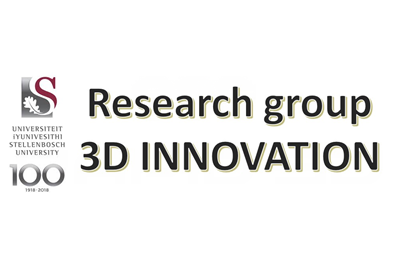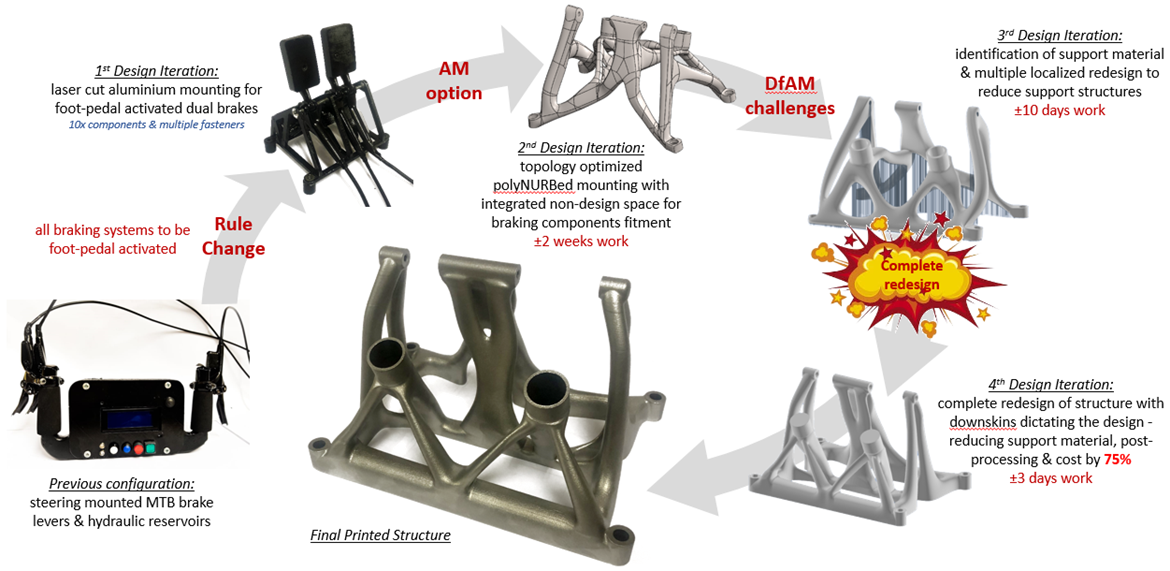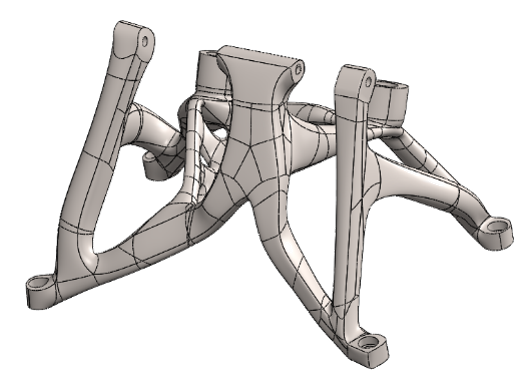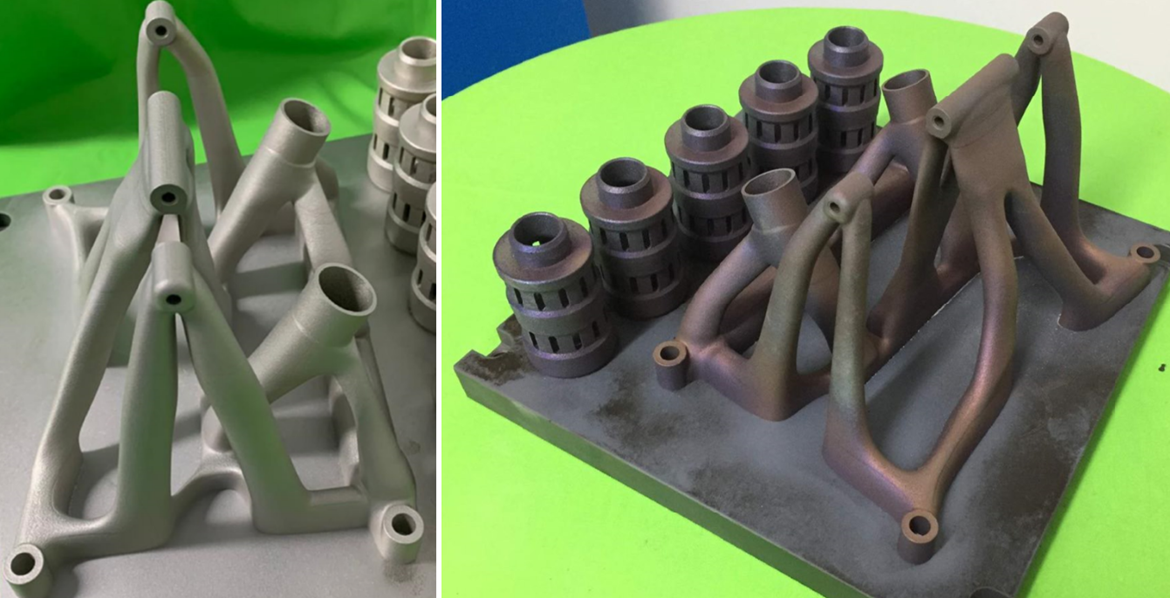This project was completed with the invaluable collaboration of
 and
and 
In the previous years the NMU Eco Car team used a steering mounted MTB brake lever system to actuate the brakes; however for the 2020 Shell Eco Marathon and subsequent competitions, there was a rule change that required the brakes to be converted to foot operated brake pedals thus necessitating a design change in this area.

Two main options existed:
-
a completely new system with custom components, or
-
integrating current components into an adapted system
To simplify the process with a looming event, it was decided to undetake the second option which would also prove to be the simplest as the team could utilize exisiting components to guide the design.
Once this decision had been made, two initial abortive quick-fix designs were considered, and then summarily discarded in favour of a more sophisticated and organic topology optimized structure which would be metal 3D printed.

This was to be the start of an interesting and challenging journey into the world of Design for Additive Manufacture (DfAM) where the design team had to wrestle on multiple occasions with subtractive mindsets colliding with the reality of Additive Manufacturing print constraints. A seemingly simple design task was to prove our most challenging and most valuable ultimately.
Once the AM route was finalized and funding for this was achieved, the 2nd design iteration employed topology optimization to generate a structure that would envelope current components and also fit into the vehicle and also accommodate the driver's feet in a very tight operating space.
However, the first lesson of DfAM was learned here - this design iteration was going to be inordinately expensive due to the amount of support material that would be produced in the metal printing process. So an intricate process of iteratively honing the design starting to successively reduce resultant support material was undertaken.

The problem with this, was that in this iterative process, the tricky NURB'd surfaces produced are not accommodating to design changes, resulting in a challenging and increasingly complex set of intersecting and overlapping surfaces as each small change was made. This resulted in the CAD becoming more and more reluctant to accept any further manipulation until a point of no return was reached, and a hard decision had to be made - a complete redesign!

While this appears to be a complete trainsmash in engineering terms, the design was already informed by all previous steps in the iterative process which meant that a 3rd design iteration was able to be completed in a relatively short time period.
This enabled the foundation for the 4th iterative design step, which was the reduction of all external support completely - this had the impact of reducing AM costs by 75% from the initial design, which is significant when funding and time are extremely restricted.
The final design had no external support material and very little internal support material as well.

The final brake support structure was printed by Akhani3D on their remarkable EOS M290 in stainless steel 316L which operated using a direct metal laser sintering process which took 24-and-a-half hours to print.

After printing, the structure was then heat treated at 500 degrees Celsius to relieve stresses and then post-processed using wire cutting and blasting.
Finally the structure was also integrated not only into the Eco-Car but also onto a display jig for Expo purposes.
Designer Zaahid Imran also won an award for Best Design in Transportation at the RAPDASA Conference - well done to him and the excellent work done here.

Our thanks go out to all at Akhani3D and the Research Group 3DInnovation for all their invaluable assistance in the production of the Brake Support Structure, another very beautiful and functional example of what can be achieved when marrying engineering design with Additive Manufacturing.
